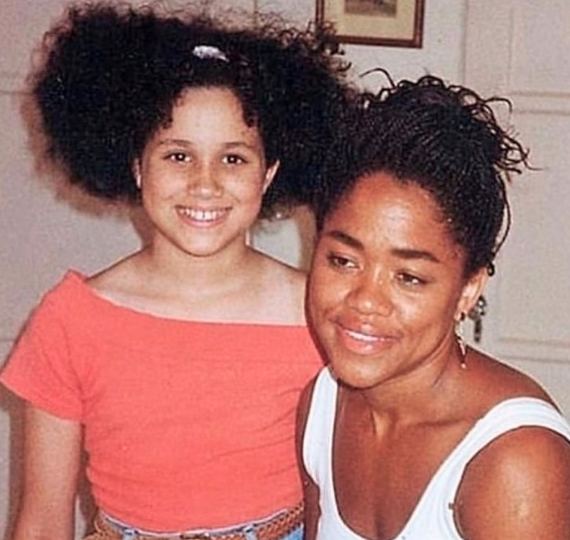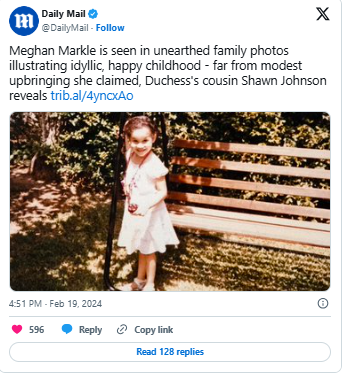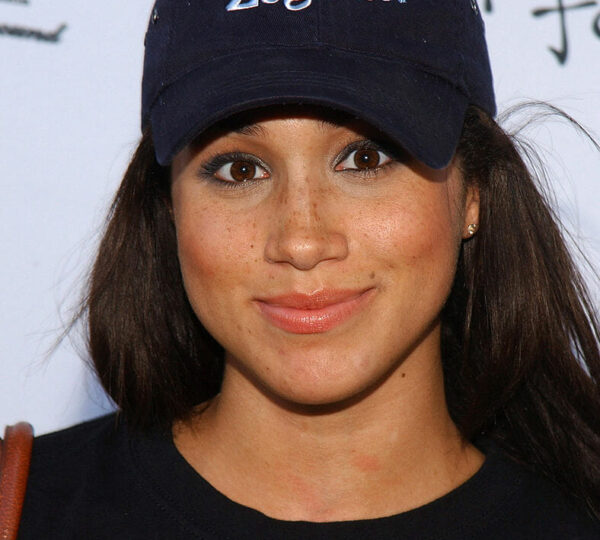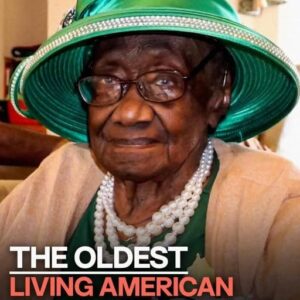From Insecure Teen to Royal Star: Meghan Markle Opens Up on Childhood Struggles and Near-Death Postpartum Experience
Before the royal titles, global headlines, and millions of fans, Meghan Markle was just a young girl navigating life in Los Angeles, often warming up microwave dinners and quietly wondering where she belonged. Born to a Black mother, Doria Ragland, and a white father, Thomas Markle Sr., Meghan’s early years were shaped by the duality of her heritage—a reality that often left her feeling caught between worlds. “My dad is Caucasian and my mom is African American. I’m half Black and half white,” she once said, acknowledging the identity struggles that would shadow much of her youth.
Raised largely as a latchkey kid, Meghan came home to an empty house while her parents worked long hours. She recalled a childhood punctuated by TV dinners and evenings watching Jeopardy!, describing herself as a “big nerd” and often feeling invisible in school cliques and social hierarchies. Financial struggles were part of everyday life, yet small luxuries, like a visit to the Sizzler salad bar, held special meaning. When her father won $750,000 in the lottery, the money enabled better schooling and opportunities, fueling Meghan’s early ambitions. By 13, she had begun working odd jobs and nurturing a passion for acting on sets where her father worked.
Yet belonging remained elusive. As a biracial teen, Meghan often felt she didn’t fit neatly into any category. “I wasn’t black enough for the black roles and I wasn’t white enough for the white ones,” she later reflected. Even within her family, she navigated complex dynamics. After her parents’ separation, Meghan split time between them, ultimately living full-time with her father from age nine until leaving for college at eighteen. Her mother moved to a predominantly Black neighborhood, creating a supportive community of women who helped guide Meghan’s adolescence.

Despite the insecurities of youth, Meghan’s intellect and empathy set her apart. “She was always so easy to get along with, congenial, making friends. She was a very empathic child, very mature,” Doria Ragland said, reflecting on their relationship. Meghan herself described her mother not as a typical parental figure but sometimes more like an “older, controlling sister.”
Her acting career began in earnest with roles like Rachel Zane on Suits, but Meghan’s personal life would soon thrust her into a very public spotlight. Meeting Prince Harry in 2016 and marrying two years later transformed her into the Duchess of Sussex, mother to Prince Archie and Princess Lilibet, and a global figure navigating royal responsibilities and media scrutiny.

Even amid the glamour of royal life, Meghan faced profound personal challenges. In her 2025 podcast, she opened up about surviving postpartum preeclampsia, a rare and life-threatening condition following childbirth. “We both had very similar experiences — though we didn’t know each other at the time — with postpartum,” she revealed. “It’s so rare and so scary.” Her struggles continued with the heartbreak of a miscarriage, which she detailed in a deeply personal essay.
At 33, Meghan reflects on her journey with gratitude and hard-earned self-acceptance. “I am 33 years old today. And I am happy,” she wrote. “To figure out how to be kind to yourself… to feel [happiness] — it takes time.” From microwave dinners to red-carpet appearances, from teenage insecurities to global recognition, Meghan Markle’s life is a portrait of resilience. She has carved her own path, blending advocacy, motherhood, and public life, telling her story on her own terms while navigating the pressures of both Hollywood and royalty.
Her story is not a fairy tale, but it is unmistakably human: a narrative of perseverance, identity, and survival, punctuated by moments of both joy and near-tragedy, and ultimately defined by her determination to claim her place in a world that tried to define her.


